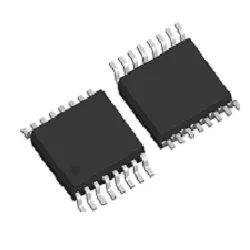Supply original LM6588MTX/NOPB, Linear - Amplifiers - Video Amps and Modules, by texas

Pictures are for reference only. Please contact us for the latest pictures.
Availability
Price Range
| Quality | Unit Price |
|---|---|
| 1 | |
| 10 | |
| 30 | |
| 100 | |
| 500 | |
| 1,000 |
Due to different local policies, please contact us for the latest quotation.
We are ISO 9001, AS 9120B, IOS 14001 certified, ensuring that our quality management system meets international standards. This certification guarantees that every electronic component we supply is authentic, reliable, and traceable. Our dedicated inspection team conducts rigorous quality checks to prevent counterfeit products and reduce failure rates. By adhering to these stringent quality controls, we provide our customers with peace of mind and products they can trust.
Overview
The LM6588MTX/NOPB is a high-performance operational amplifier (op-amp) manufactured by Texas Instruments. It is designed for a variety of applications, including signal conditioning, data acquisition, and active filtering. Here’s a detailed description of its key features and specifications:
General Features:
- Type: Dual Operational Amplifier
- Package: The LM6588MTX/NOPB is typically available in a 14-pin TSSOP (Thin Shrink Small Outline Package) which is compact and suitable for space-constrained applications.
- Temperature Range: It operates over an extended temperature range, typically from -40°C to +125°C, making it suitable for industrial and automotive applications.
Electrical Characteristics:
- Supply Voltage: The op-amp can operate with a dual supply voltage ranging from ±2.5V to ±15V, or a single supply voltage from 5V to 30V.
- Input Offset Voltage: The LM6588MTX/NOPB features a low input offset voltage, typically around 0.5 mV, which enhances accuracy in precision applications.
- Input Bias Current: The input bias current is low, typically around 10 nA, which is beneficial for high-impedance sensor applications.
- Gain Bandwidth Product: The op-amp has a gain bandwidth product of approximately 10 MHz, allowing it to handle a wide range of frequencies effectively.
- Slew Rate: The slew rate is typically 6 V/µs, which enables the op-amp to respond quickly to rapid changes in input signals.
Performance:
- Common-Mode Rejection Ratio (CMRR): The CMRR is high, typically around 100 dB, which ensures that the op-amp can effectively reject common-mode signals, enhancing its performance in differential signal applications.
- Power Supply Rejection Ratio (PSRR): The PSRR is also high, ensuring stable operation despite variations in supply voltage.
- Output Drive Capability: The LM6588MTX/NOPB can drive loads of up to 600 Ω, making it suitable for driving various loads without significant distortion.
Applications:
The LM6588MTX/NOPB is ideal for applications such as:
- Precision signal amplification
- Active filters
- Data acquisition systems
- Instrumentation amplifiers
- Audio processing
- Medical instrumentation
Additional Features:
- Low Noise: The op-amp is designed to minimize noise, making it suitable for sensitive applications.
- Rail-to-Rail Output: The output stage is designed to provide rail-to-rail output, maximizing the output voltage swing and improving the dynamic range of the application.
Conclusion:
The LM6588MTX/NOPB from Texas Instruments is a versatile and high-performance dual operational amplifier that combines low noise, high precision, and a wide range of operating conditions. Its features make it suitable for a variety of demanding applications in both consumer and industrial electronics.
Product Parameter
Product Attribute
Export Classifications & Environmental
Articles
With its unique properties of radiation hardening, unlimited read/write endurance, and low power consumption, MRAM is becoming the preferred choice for next-generation aerospace memory. This article will provide an in-depth analysis of MRAM's key advantages and applications in the aerospace field.
Comprehensive overview of MR25H40CDF SPI MRAM: specs, applications, case studies, and our real-stock advantages.
Key developments and expert insights in the global electronic components industry for the fourth week of June 2025.
